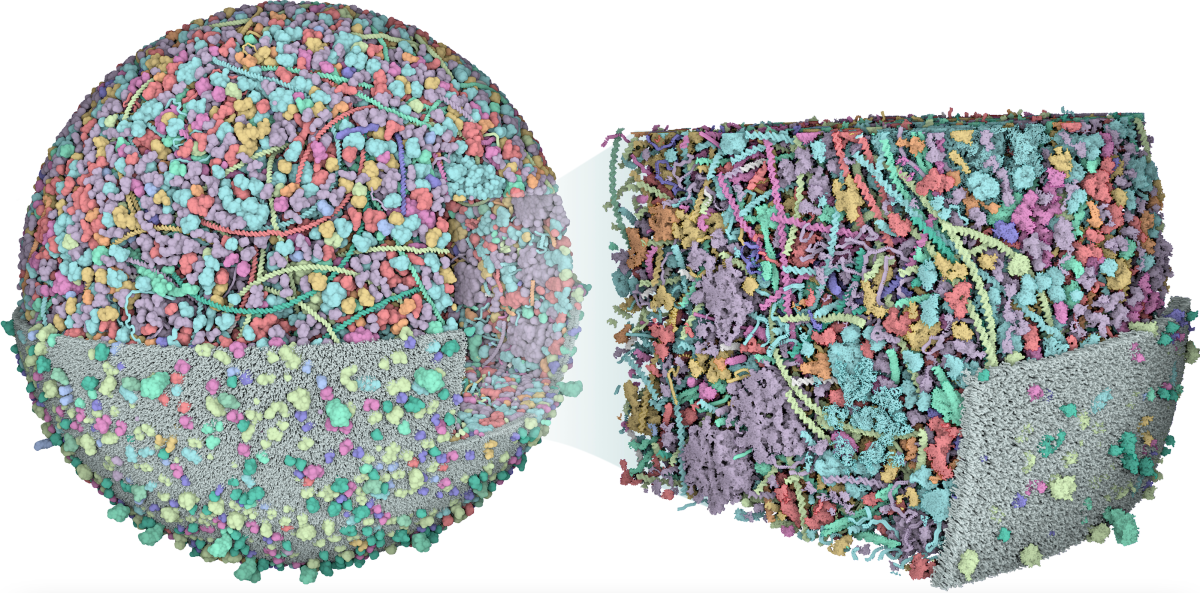La Jolla researchers develop new 3D model of a cell; another wins $1.25 million NIH grant

Researchers in La Jolla have developed the first 3D model of an entire cell in molecular detail.
The work is described in a recent Journal of Molecular Biology article.
One of the paper’s authors, Scripps Research scientist Arthur Olson, said the paper details “a new landmark in our goals to computationally model and visualize living systems in molecular detail.”
Get the La Jolla Light weekly in your inbox
News, features and sports about La Jolla, every Thursday for free
You may occasionally receive promotional content from the La Jolla Light.
Olson started the Molecular Graphics Laboratory at Scripps 40 years ago.
“I had become enamored with the visualization aspects of how we understand these complex structures,” Olson said. “I bought in early.”
“When you’re in a science like ours,” he continued, “what you try to do is start with the simplest things that are feasible, as proof of principle, and then the technology can develop to get larger.”
Using a new artificial intelligence identifying method, researchers at UC San Diego in La Jolla and their collaborators have taken what may turn out to be a leap forward in the understanding of human cells, according to a report published this week.
According to a Scripps news release, developing structural models of entire cells “has been a long-standing cross-discipline challenge for the research community, as it requires an unprecedented level of integration between multiple sources of biological data and enhanced methods for computational modeling and visualization.”
And the technology to make it happen has become increasingly sophisticated.
“Now we have things that are 1,000 times more powerful in every way, including the graphics in our pockets,” Olson said. “We’re looking to model larger organisms at some point. We’ve done some modeling on the pancreatic beta cell in another collaboration. And there, what we’ve modeled so far are the insulin secretory granules that carry the insulin from the beta cell into the system. In other words, the delivery mechanism for insulin in the pancreas.
“Our goal is to make these models usable with certain confidence levels in simulations of how the cell operates over time. We’re not at that stage yet.” — Luke Harold / Del Mar Times
Scripps Research scientist receives early-stage investigator award
Scripps Research staff scientist Daniel Murin has been named a recipient of the Stephen I. Katz Early Stage Investigator Research Project Grant from the National Institutes of Health.
The grant will provide $1.25 million in funding over five years to support Murin’s research of how antibodies enable “natural killer” (NK) cells of our innate immune system to target HIV, the virus that causes AIDS. The knowledge attained will form guiding principles to engineer HIV antibody therapeutics and vaccines aimed at eliciting more potent immune responses.
“This award is a turn in the tide for young investigators and a sign that the NIH is following through with many of the initiatives that they began in previous years,” Murin said in a statement. “I am proud to be able to share this award with Scripps Research and continue to be part of the growing world-class research environment here.”
Murin is the first recipient of the award in the United States since the opportunity was announced in January. — Scripps Research ◆
Get the La Jolla Light weekly in your inbox
News, features and sports about La Jolla, every Thursday for free
You may occasionally receive promotional content from the La Jolla Light.
